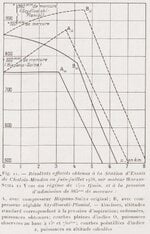In order not to clog another thread.
The decease of power due to the 'throttle losses' ought to be smaller for the engines with the low-speed gear (MS in British speke) than on the engines that are without that gear. It was not just what the 1-speed FS Merlins (like the Mk. II, III, 45, 47 or 50) experienced, but also the V-1710s.
One of the appeals of the swirl throttle was that it was supposed to cool the air a little bit, that helped with the power generated.
link
End result on the AM-35A engine (that was with power comparable to the Merlin 45/50 on +9 psi) was the gain of 100-150 HP at S/L.
Similar was the thing with the HS-12Y-45 vs. the -31 - the controllable vanes before the impeller allowed for the much lower loss of the power under the FTH, despite the -45 having a much more capable supercharger.
American test
Graph, comparing the boost (full lines) and power (dashed lines) of the run-on-he mill HS 12Y engine and the -45:
Look at the Merlin VIII engine or Merlin X engine in low gear to see the effect. Same supercharger turning slower is allowed to use higher boost and/or heats the intake air less.
Some people just lumped everything going on at low altitude into 'throttle loss' rather than go through a long explanation.
The decease of power due to the 'throttle losses' ought to be smaller for the engines with the low-speed gear (MS in British speke) than on the engines that are without that gear. It was not just what the 1-speed FS Merlins (like the Mk. II, III, 45, 47 or 50) experienced, but also the V-1710s.
One of the appeals of the swirl throttle was that it was supposed to cool the air a little bit, that helped with the power generated.
link
End result on the AM-35A engine (that was with power comparable to the Merlin 45/50 on +9 psi) was the gain of 100-150 HP at S/L.
Similar was the thing with the HS-12Y-45 vs. the -31 - the controllable vanes before the impeller allowed for the much lower loss of the power under the FTH, despite the -45 having a much more capable supercharger.
American test
Graph, comparing the boost (full lines) and power (dashed lines) of the run-on-he mill HS 12Y engine and the -45:

